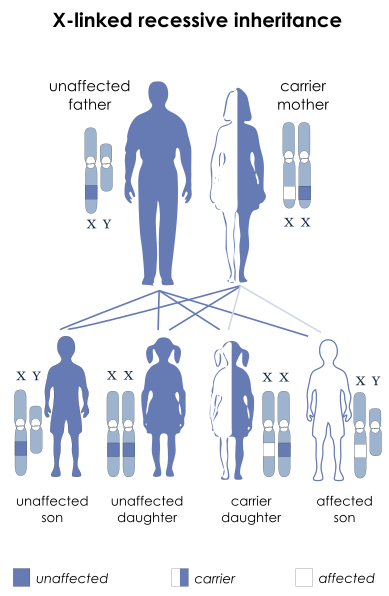Duchenne muscular dystrophy is one of the rare muscle disorder that affects males at most which is usually recognized at the age of between two and six years old.
One in 3800 men is affected by Duchenne muscular dystrophy (DMD) worldwide, because of an X-linked recessive gene that they inherit from the female side of the family.
What is Duchenne Muscular Dystrophy (DMD)?
Since this is an inherited disorder, there will likely be a family history of DMD.

It is the commonest and severest form of muscular dystrophy.
What are The Symptoms of Duchenne Muscular Dystrophy(DMD)?
The disease starts showing symptoms between the ages of two and six and is identified by the rapid weakening of muscles in the:
- Pelvis and legs
- Then linked to the loss of muscle mass or wasting in the shoulder area
- and finally affecting the whole body.
The muscle weakness progresses rapidly with frequent falling and difficulty with motor skills such as jumping and running.
Sufferers will require braces to support them by age ten and will find it difficult to walk by the age of twelve.
There is an abnormal development of the bones, which leads to skeletal deformities in the spine and other areas, which may add to breathing disorders.
The patient may also be intellectually impaired though this is not always the case and is not a progressive condition.
The Diagnose of DMD
Physicians will diagnose DMD by observing the physical symptoms such as:
- Muscle wasting
- Enlargement of calf muscles
- Cardiomyopathy and respiratory disorders, and referring to the family medical history.
- They may suggest a neurological exam to identify weakness and lack of coordination and balance.
- The diagnosis of DMD will be further confirmed by doing a muscle biopsy and carrying out a blood test to see if there are high levels of creatine kinase.
Complications Attending DMD
Some complications are attending DMD, such as:
- Decreased mobility and ability to care for oneself
- Deformities occur as does mental impairment.
- Respiratory infections such as pneumonia
- Congestive heart failure and heart arrhythmias are rare but can occur.
If your child has these symptoms and they don’t respond to conventional treatment, consult a physician immediately.
Also, get medical help if the symptoms become worse or new symptoms develop, such as an increase in fever with respiratory difficulties or cough.
Is There any Cure for Duchenne Muscular Dystrophy (DMD)?
Right now, there is no cure for DMD.
FDA approved the injection of Exondys51 (eteplirsen) in 2016 and Emflaza (deflazacort) in 2017 to treat DMD.
This treatment is doing a mutation of the dystrophin gene by twelve percent.
What patients with DMD can do is exercise and muscle stretch workouts that can help their condition.
Surgery may be carried out to correct contractual such as putting in a metal rod that will straighten the spine and hold it in place.
All in all, treatment aims at improving the quality of life for DMD sufferers. They must remain active.
If they confine themselves to the bed, it can increase the wasting of the muscles.
Their mobility will improve if they use braces or a wheelchair that can even help them to look after themselves to a certain extent.
Research is ongoing on gene therapy to help DMD patients.
Family members can undergo a gene test to detect if the defective gene is present, and if the females in the family are carriers of the disease. DMD can be recognized with about 95% accuracy if genetic studies are carried out during pregnancy.
DMD sufferers can join support groups and discuss common problems and experiences and treatments and their effects.
